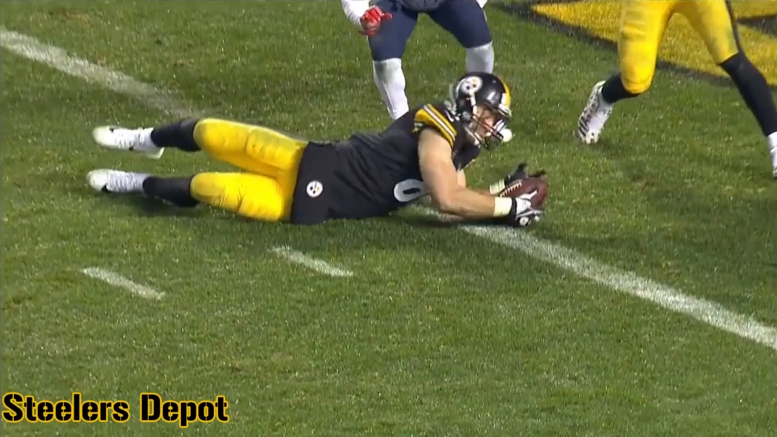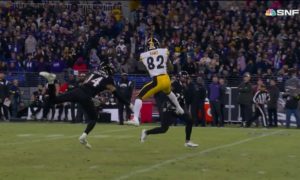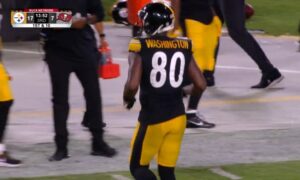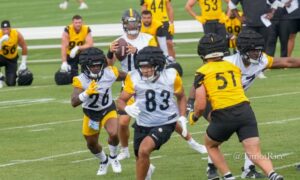Earlier this week, I argued that the catch rule is overdue to be revised this offseason in a very earnest manner that actually address a number of the issues that it presents. Almost everybody chose to overlook this central point of the article, but I digress.
Yesterday, Pittsburgh Steelers head coach Mike Tomlin, who is a key member of the NFL’s competition committee, also said that the catch rule is in need of revision and that it will be looked at in the offseason. I would imagine that enough teams have suffered from it that a change might occur.
So exactly what in the rule needs fixing? The nature of some of the aspects within it should be altered, for one thing, but one of the central problems is simply the language that it contains, and the lack of clear teams. I wanted to take a look at some of these issues.
You can read the catch rule for yourself at this official link.
Because I provided the link, I won’t do a lot of copying and pasting, for simplicity’s sake, but I will quote a few of the pieces that need to be clarified. And I will add here that the matter is greatly complicated by officials using terminology that is not within the rule itself, like “survive the ground”, “football move”, and “acts common to the game”.
We all know what a catch should be, and that accounts for the first two stipulations of what define a catch. Where things get murky is step three, which reads as follows:
“[A player] maintains control of the ball after (a) and (b) have been fulfilled, until he has the ball long enough to clearly become a runner. A player has the ball long enough to become a runner when, after his second foot is on the ground, he is capable of avoiding or warding off impending contact of an opponent, tucking the ball away, turning up field, or taking additional steps (see 3-2-7-Item 2)”.
The problem is that these ‘common’ acts are vague. Many have argued, for example, that Jesse James either tucked the ball or turned upfield. While the NFL did not necessarily agree nor disagree, this is still a problem within the rule.
The James touchdown was overturned not because the NFL did not determine that he was a runner, but because he did not “maintain control of the ball until after his contact with the ground, whether in the field of play or the end zone”, as is written in the section referenced above at the end of the first quote.
Yet in the catch rule section itself, the above is written as “his initial contact” with the ground, which has caused a great deal of the confusion. James’ ‘initial’ contact with the ground was his knee. But obviously they don’t mean this as the ‘initial’ contact. So it should not be written that way.
Might I point out that in the first quote, it references (a) and (b), yet the requirements are numbered, not lettered.
Even in the league’s own explanation for the decision to overturn the call on the field after the review, they used the phrase “completed a pass” when they obviously did not mean to say that the pass was a completion. And the terminology problem is just one of the issues with the catch rule. If you don’t say what you mean, or say things that can be easily misconstrued, then you have done your job poorly for such a crucial text essential to the game.








